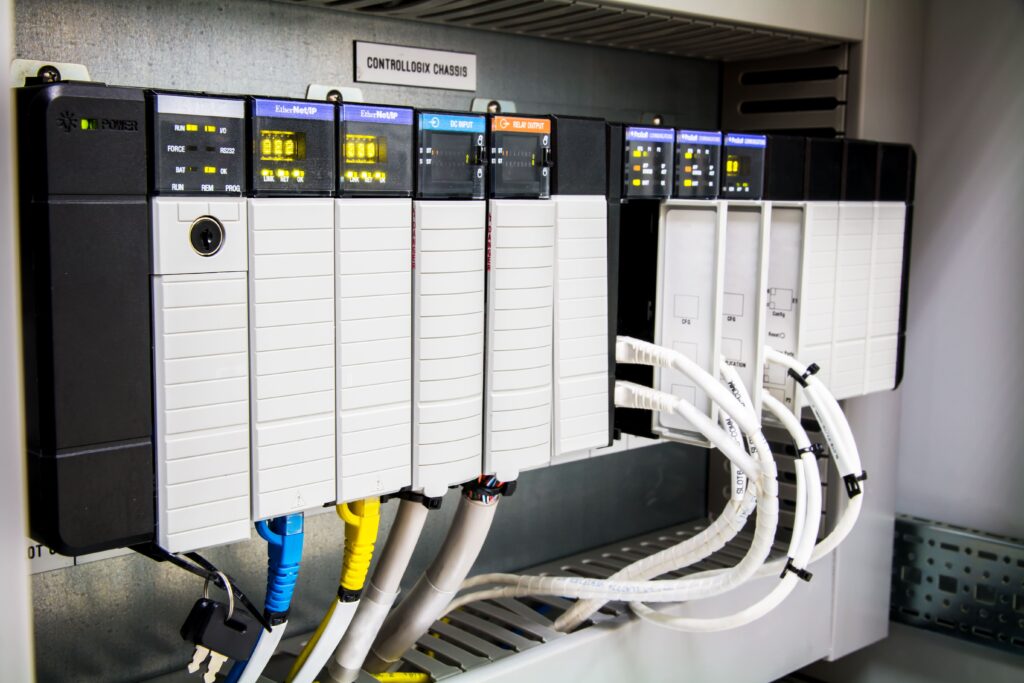
Essential Skills Mapping for Smarter Hiring in Industrial Automation

Understanding the skills required for your business operations is crucial for effective hiring and recruitment.
The expertise and competency of your workforce play a significant role in your ability to deliver projects on time with minimal rework.
In todays increasingly competitive environment it is important for managers to drive towards a “right first time” approach. This means minimising re-work, design defects, non-compliance and other issues that contribute to cost overruns.
Optimizing your workforce performance means having the right people in the right place and this starts with firstly defining the skills and competencies needed for each role.
By clearly identifying and mapping out the essential skills needed across your operations, you can build a skills checklist.
A skills checklist is beneficial for organizations that frequently hire in highly technical domains like industrial automation. It helps managers identify talent shortages by serving as the foundation for an audit of the current workforce’s capabilities.
Additionally, a skills checklist can function as a shared point of reference between engineering and HR teams, facilitating clearer communication.
This ensures that the specific skills and requirements for a position are accurately conveyed from engineering through HR to the final job description, leading to more efficient and effective hiring.
While many organizations can easily define a job role and its responsibilities, they often struggle to translate these into specific skills and experience requirements that resonate with candidates. Unfortunately, many job descriptions contain poorly articulated skills and experience requirements, leading to ambiguous or generalized descriptions that attract a flood of hopeful candidates.
By creating a clearly defined list of skills, organizations can adopt a skills-based approach to hiring that aims to address the actual skills gap in their workforce, rather than simply filling positions.
Benefits of a Skills Checklist?
Internal Survey Tool: HR teams can utilise a skills checklist to conduct internal surveys with the engineering department. It can help accurately identify the skills and experience needed for the vacancies they are trying to fill.
Better Communication: Enables clearer and more effective communication between engineering and HR departments. By using a standardised skills list, complex technical requirements can be better understood and addressed.
More Effective Job Descriptions: Enables more precise job descriptions that align with the actual talent gaps within the organisation, saving time and effort.
Interview and Screening: The checklist can be deconstructed into effective interview questions and screening parameters, improving the selection process.
Talent Pool Evaluation: This tool allows engineering managers to evaluate the skill sets of their workforce by checking relevant skills against actual workforce competency. Helps identify gaps in skills and experience, facilitating targeted training and development to meet operational needs.
Essential Skills for Industrial Automation
When identifying essential skills within your workforce, it’s crucial to consult with lead engineers to understand the specific technical competencies required for your operations. Different integrators, OEMs, and engineering firms often work with various platforms and industries, leading to unique skill demands.
That said, there are several core pillars of the industrial automation profession that are widely considered essential across most organizations. These include:
- Industrial Control System (ICS)
- ICS Network Infrastructure
- ICS Cybersecurity
- ICS Integration – Supplier Packages & Instrumentation
- IT/OT Integration
- Software Programming and IT
- Engineering and Design
- Experience and Background
- Technical proficiency at interpreting engineering drawings
Industrial Control System (ICS)

Skills related to integrating various modalities of computerised automation systems and platforms (collectively called ICS).
SCADA Integration: Ability to develop HMI and integrate PLCs and other ICS equipment with market-leading SCADA systems such as SIMATIC WinCC, VTSCADA, GE CIMPLICITY, iFix, and Wonderware InTouch.
PLC Configuration: Ability to design, configure, and test industrial automation applications with major PLC models such as Schneider Electric, Siemens, Allen-Bradley, and Mitsubishi.
DCS Integration: Ability to integrate DCS with market-leading suppliers such as Honeywell Experion/TDC, Emerson DeltaV DCS/SIS, Yokogawa CENTUM DCS/ProSafe, or ABB 800xA.
Industrial PCs: Ability to program and troubleshoot industrial PCs and embedded systems used for industrial automation applications.
ICS Application Software Configuration: Ability to interpret engineering design inputs and configure ICS application software utilising standard IEC61131-3 programming languages such as FBD, LAD, and SFC.
Industrial Control System Networks

Industrial Control System Networks skills related to designing, testing and managing the network infrastructure that supports communication between field devices, ICS equipment and external networks.
ICS Networks – Design: Ability to design complex multi-topological industrial networks based on the spatial arrangement of ICS equipment, environmental constraints, and end-user requirements for network manageability, availability, and latency.
ICS Network – Commissioning: Ability to configure, troubleshoot, and commission various Layer 2 (L2) and Layer 3 (L3) network devices, such as servers, workstations, switches, firewalls, and routers.
ICS Network – Protocols: Ability to demonstrate conversance with both application and physical layer communication protocols commonly used for ICS integration such as OPC, Modbus, CAN Bus, DNP3, BACnet, Ethernet/IP ect.
ICS Network – Diagnostics: Ability to monitor and analyse Ethernet network traffic and identify the source network faults and performance issues using diagnostic’s tools such as Wireshark.
ICS Cybersecurity

Skills to maintain a strong ICS cybersecurity posture and associated aspects of ICS network design.
ICS Network Cybersecurity Design: Ability to specify, design, and implement firewalls and demilitarised zones (DMZs) that adhere to ICS cybersecurity best practices outlined in ISA 99/IEC 62443 standards.
ICS Cybersecurity Commissioning: Ability to manage ICS network cyber security activities, including penetration testing, hardening, access control, vulnerability management, penetration testing, and patch management.
Skills Control System Integration
Packages and Machine Integration
Control system integration skills related to the process of designing and testing interfaces between the main facility ICS (SCADA/DCS) and automation systems contained within packages supplied by vendors.
Package Interface Design: Ability to analyse vendor system design and to specify an ICS interface design that meets end-user requirements for control, monitoring, and diagnostics of third-party package systems.
Package Interface Commissioning: Ability to test, diagnose, and troubleshoot ICS / package interfaces using debugging tools such as Modscan.
Integration of Field Devices and Smart Instrumentation
Skills related to the process of designing and testing interfaces between the main plant ICS (SCADA/DCS) and various field devices such as valves, transmitters and sensors.
Smart Device Integration: Ability to analyse datasheets of intelligent field devices and to specify, configure, and troubleshoot interface solutions utilising common Fieldbus protocols such as Profibus, HART, Foundation Fieldbus, and Modbus TCP.
Wired Control Loop Interfaces: Ability to analyse instrument datasheets and specify an analogue/digital loop design that considers all constraints and requirements, such as loop power, intrinsic safety, and fault detection.
Instrument Database: Ability to interpret instrument databases such as SPI or AVEVA for the design and configuration of ICS application software using standardised, scalable approaches and optimising the use of ISA-88 control elements such as modules, units, and areas.
Skills for Integration Skills IT and OT Domains
Skills related to integrating products and developing middleware applications that exchange operational data between plant-floor control systems (OT) and end-user enterprise systems (IT), often referred to as IT/OT integration.
Process Information Management System (PIMS): Ability to interpret client requirements and configure visual interfaces, dashboards, and automated reports for operational data using market-leading PIMS applications such as OSIsoft PI and AspenTech.
Manufacturing Execution Systems (MES): Ability to interpret client requirements and design, develop, and test interfaces for integrating plant control-level ICS with operations-level applications such as MES, QMS, and APS.
Data Aggregation and Historian: Ability to configure interfaces for extracting, aggregating, and historising operational data from diverse industrial sources using market-leading PIMS applications such as OSIsoft PI, AspenTech.
Embedded Systems and Edge Devices: Ability to design, configure and deploy edge computing devices within modern IoT frameworks and other Factory 4.0 advanced applications.
Software Programming and IT Skills

Skills related to using object-oriented programming languages beyond IEC61131-3, which are commonly employed for ICS integration. Additionally, expertise in shell scripting, database management, and advanced server management.
Object-Oriented Programming: Ability to develop and integrate complex ICS integrations such as DCS/SCADA utilising common object-oriented languages such as Python, VBA/VBScript, HTML, and C#.
Scripting: Ability to develop and integrate complex ICS systems utilising command-line scripting, such as the Linux shell, Windows PowerShell, and Windows CMD.
Databases: Ability to design, configure, and manage relational databases commonly used in ICS, such as SQL Server, Oracle, MySQL, and OSIsoft.
Virtualisation: Ability to deploy, troubleshoot, and manage virtualised hardware and software solutions commonly used by market-leading DCS providers such as Microsoft Hyper-V, VMWare vSphere, and Dell VRTX.
Windows Server: Ability to configure and manage users and group policies in Windows Active Directory environment.
Control System Engineering and Design

Industrial Automation Engineering skills related to the FEED (Front End Engineering Design) and execution stages of ICS projects are critical, especially when working with engineering contractors on major CAPEX projects.
ICS Conceptual Design: Ability to manage and support the evolution of DCS/SCADA design, using available engineering inputs, from concept to detailed engineering phase.
ICS Detail Design: Ability to identify and collate all engineering design inputs for ICS design and develop a comprehensive dossier of engineering deliverables, such as control narratives, sequence function charts (SFC), cause-and-effect (C&E) diagrams, and I/O lists.
ICS Application Logic Design: Ability to interpret process design inputs (e.g P&IDs and UFDs) and accurately formalise them into control descriptions using standard expressions of logic (e.g. Control Narrative, C&E) to be utilised for configuration by the main automation contractor (MAC).
Interdisciplinary Coordination: Ability to effectively coordinate with other engineering disciplines, such as process, electrical, and instrumentation, ensuring a comprehensive implementation of all design inputs to achieve cohesive project outcomes.
Management of Supplier Automation Systems: Ability to review ICS aspects of package supplier engineering deliverables to identify anomalies, defects, and non-compliance, and coordinate the resolution of all such cases to ensure successful integration.
Managing MAC Input Engineering Design: Ability to effectively manage the issuance of detail design inputs to the main automation contractor (MAC), ensuring the delivery of high-quality hardware/software design inputs within the constraints of project milestones. Coordinating with MAC to review and close out design queries in a timely manner.
Managing MAC Engineering Deliverables: Ability to interpret, review and comment on detailed design specification documents issued by the Main Automation Contractor (MAC).
Experience and Background
The supply chain of industrial automation systems and components is a diverse web of companies of various sizes, each with different commercial interests and obligations.
Their outputs converge at a specific site or facility where the end user must take ownership.
It’s important to understand that candidates’ skills and expertise will be shaped by the commercial dynamics of the organisations they have worked in.
For example, candidates coming from companies that are highly product/sales-driven, such as OEMs, may have different perspectives and approaches compared to those from solution-driven organisations like system integrators.
Therefore, a candidate’s background and previous experience should be carefully considered to ensure good alignment with your business.
Job Function Experience: The candidate’s experience working within specific roles based on their function, such as commissioning, engineering, O&M, and field service. How does this experience align with the function of the role to be filled?
Organisational Experience: The candidate’s experience working at companies in different parts of the automation supply chain with different commercial obligations, such as end-users, control system integrators (CSI), engineering contractors (EPC), automation suppliers (MACs), and vendors. How does this organisational experience align with the commercial operation of your business?
Industry Experience: The industry verticals the candidate has experience delivering automation systems and their experience in developing automation solutions for industry-specific applications. How does this industry experience align with your customer base’s automation needs?
Testing Experience: Candidates experience planning, managing, and supporting client witness testing (FAT, SAT, SIT, etc.). Will the candidate be able to represent the company during the formal inspection of contract deliverables?
Technical Proficiency
The ability to interpret engineering drawings and diagrams commonly used in the design of Industrial Control Systems (ICS).
Process Design Inputs
- Process Flow Diagram (PFD)
- Process and Instrumentation Diagram (P&ID)
- Utility Flow Diagram (UFD)
- Process Datasheet (PDS)
ICS Design Documents
- I/O List / Schedule
- Single Line Diagram (SLD)
- Cause and Effects (C&E)
- Control Narrative
- Logic Diagrams (ISA 5.2)
- Interface Signals List (e.g. Modbus Maps)
- SAMA Diagram
- GRAFCET
- Panel Wiring Drawings
- Control room Layout drawing
- System Network Architecture Drawings
- Safety Requirement Specification (SRS)
Instrumentation Design Documents
- Instrument Index
- Instrument Loop Diagram
- Block and Wiring Diagram (BLD)
- Instrument Datasheets
- Instrument Layout Plans
- Instrument Cable List
- Cable Routing
- Multi Cable Transit (MCT)
- Earthing Drawings
- Tank Level sketches
- Instrument Legend Sheets
Conclusion
This checklist is a valuable tool that provides a structured approach for identifying and documenting required skills and experiences.
It helps bridge the gap between engineering and HR departments, supports recruitment agencies in delivering high-quality candidates, and aids engineering managers in assessing and developing their teams.
Utilising this checklist can lead to more accurate job descriptions, effective recruitment strategies, and improved workforce competency.
